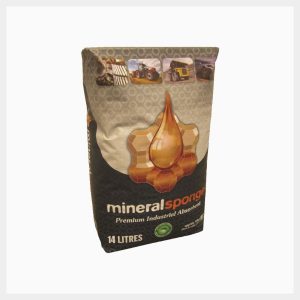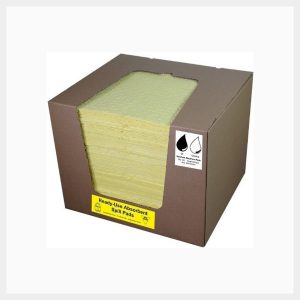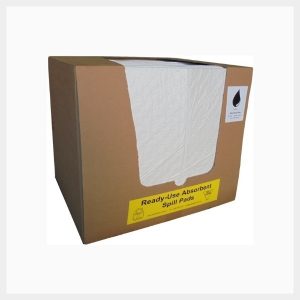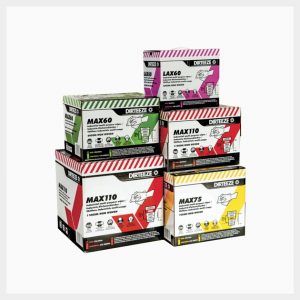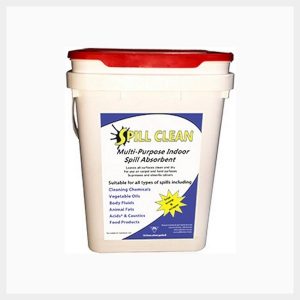In the past when asked what is used to clean up an oil spill in the workshop, it was not unusual for someone to point at a pile of sand in the corner. The big problem with this approach is that sand does not absorb anything. The sand only provides a surface area to coat that temporarily arrests the spill. Soon after the liquid is then stripped off by gravity and the spill returns with the added bonus of a pile of contaminated sand.
Next came the era of the clay based absorbent. Whilst generally better than using sand, these clay based absorbents brought a new set of problems. This product is fired in a kiln to produce the granules. Fire the clay too long and it is too hard to be absorbent. If it is not fired for long enough it will turn to mud when applied to the spill.
Fortunately spill response sorbents have evolved along with the regulations and penalties. Businesses now have the ability to effectively offset their exposure to presecutions and penalties with high quality spill solutions. Read More
One of these products is absorbent spill pads or spill mats. Although these products are commonly called “absorbent” pads the term is not accurate. Absorbents are products that take the liquid into their structure. Coconut husk is a true absorbent as the liquid is encapsulated inside the coconut fibre. Polypropylene is an adsorbent. An adsorbent is a product that allows a liquid or gas to adhere to its surface.
The original spill pad is the white oil and fuel absorbent pads. This product is made from non-woven polypropylene fabric through a process called melt blown. Polypropylene is lightweight, strong and has excellent chemical resistance capability. The absorbent pad manufacturing process heats the polypropylene and sprays it through multiple nozzles onto a moving conveyor or rotating drum in a random pattern. The speed of the the conveyor determines the weight of the material. The weight of the absorbent pad is expressed in GSM or grams per square metre.
Polypropylene is oliophillic and hydrophobic. That means that in its pure form it will repel all aqueous solutions and only adsorb hydrocarbons. This is because it carries the opposite charge of hydrocarbon (opposites attract) and the same charge as water (like poles repel).
This unique characteristic is what make oil spill pads ideal for for marine applications and are commonly found at the refuelling areas in marinas. They are also required on vessels over 150GT as a part of the Shipboard Oil Pollution Emergency Plan (SOPEP). Because the repel water they will float and are easy to retrieve during clean up. This same material is also used in the manufacturer of floating oil absorbent booms. These booms both contain and absorb hydrocarbon spill on water surfaces.
These absorbent pads are also used to absorb acids, caustics and other water based substances. To overcome the hydrophobic characteristic of the material it is treated with a surfactant. This treatment modifies the charge of the material and the surfactant also breaks the surface tention of the liquid transforming it into an outstanding chemical absorbent pad. The excellent chemical resistance makes it ideal for a wide range of substances but is not recommended for strong oxidising agents.
In order make these different spill pads readily identifiable in the event of a spill incident, a pigment is added to the chemical and general purpose absorbent pads. Yellow is added to the chemical absorbent pads and grey is added to the general purpose absorbent pads. No pigment is added to the oil spill mats as polypropylene is naturally white.
Further developments in the enhancement of these absorbent pads includes covering it with a cover stock for added strength. This coverstock is attached to the absorbent pad through a process called themal bonding. Heat is applied to many small points across the pad. The relatively low melting point of 165°C melts the layers together ond once it cools it forms a bond.
As well as increasing the strength of the absorbent pad, the thermal bonding, or dimpling, increases the speed of absorption. The point of the dimple acts as a nexus for all of the fibres once once the liquid comes into contact with the dimple it wicks very quicky along the fibres to promote rapid transformation of the liquid hazard into an easily managed solid.
Th absorbent capacity of the spill pads is based on a combination of weight and loft. The higher the loft the more fluffy the absorbent pad is. This exposes more fibre to maximise the sorbent capacity. As the loft increases the strength reduces. A tight or compressed pad is very strong but as the fibres are squashed, the sorbent capacity is reduced. The best absorbent pads achieve a compromise between between and absorbent capacity.
All things being equal, a 400GSM pad will absorb twice as much as a 200GSM pad which proves that all pads are not the same. You may be getting you pads 20% cheaper but if you are comparing a 200GSM price to a 400GSM price you are getting 50% less product and significantly less value.
The best way to determine value in spill pads is to find out what is the cost of the absorbent required to soak up 1 litre of oil. To do this, ask your supplier for independent laboratory testing to back up the claims they are making. The Australian Spill Control Industry Association has determined that standard test method BS7959-1 is the most appropriate test to use for accurate sorbent capacity determination.
These sorbents are also formed into blanket rolls to cover large areas quickly, booms to contain spills and pillows for absorbing leaks and drips. These products are also assembled into a wide range of spill response and control kits to safety and easily response to a wide range of spill incidents. They are available in standard sizes from 20 litres to 2000 litres and are packed in a wide array of bags, bins and containers.
For more information on the range of absorbents pads available contact Spill Station Australia on 1300 66 42 66.

